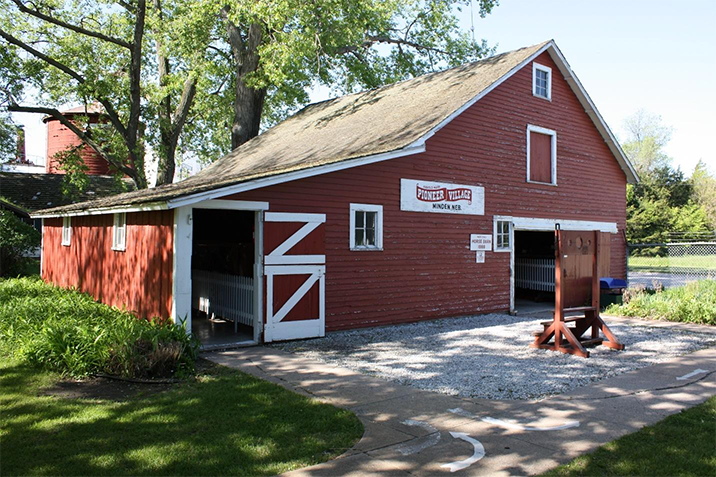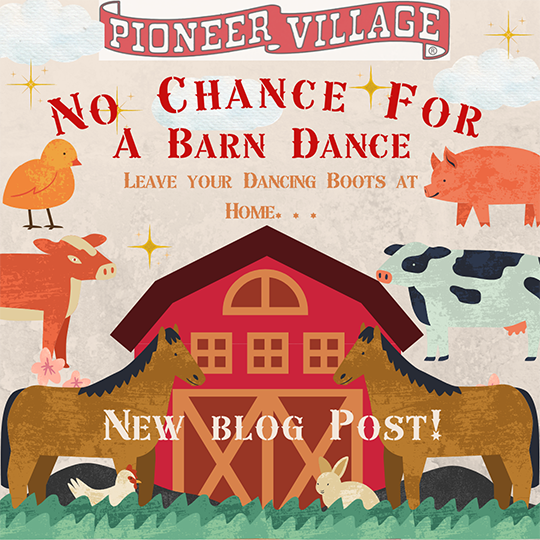The horse barn of the Warp Family’s homestead was deemed no place to host a barn dance. Strangely, the haymow floors were too rough; the wood faced opposite the typical side used for traditional barn floors. However, the rest of the barn is structured correctly. One can see the smooth wood on the beams supporting the haymow, the place where hay is stored, but the haymow itself is coarse. This odd structure begs the question:
What could possibly be the reason behind this unique design?
Background
This traditional pioneer barn was built by Mr. Harold Warp’s father and a family friend, Mike Olsen, 9 miles southeast of Minden, Nebraska in 1888. It held horses for 80 years, but after being untouched for nearly 20 years, the barn was moved and has resided at the museum since 1962.
Horse barns in these times were usually built to provide shelter and protection for food, animals, and other important family possessions. They are typically the first building a pioneer family would construct, as it is much more tolerable to live in a barn with animals while a house is being built, than having animals inside the home. They are also a signal of ownership of the land. Constructing a barn is an extremely labor-intensive process.
Ever wonder why barns are always painted red? American farmers discovered that painting a barn was necessary to protect the wood from the elements. They mixed skimmed milk, lime, and red iron earth pigments to create a durable coating. The oxide pigments in the mixture causes the red color and protects the wood from mold and decay. In the late 1800’s, paint companies started selling paint made specifically for barns, and red paint was still cheaper than other colors.
The History of Barn Dances
Dances many are still familiar with today in the U.S. – line dances, square dances, and circle dances – can be traced back to lavish ballroom dances hosted by wealthy landowners. Barn dancing started in England and Scotland in the 1860’s, where peasants mimicked the sumptuous dances of their superiors inside barns. The barn was used to celebrate special community events like holidays, as well as weddings and the construction of the barn. European immigrants brought these traditions to the United States, where it has evolved to what we see today. At the time of the Warp Family’s horse barn’s construction, these traditions were becoming more widely accepted and practiced by pioneers, and barn dancing did not face a decline until the 1950’s.
The Reason
The reason for the rough haymow floors goes beyond basic knowledge of barns or dancing. The story is a lot more personal. Before the barn was finished, one of Harold’s older brothers had asked his father if he could host a barn dance following the completion of the construction. However, this barn was not only built physically, but also built on the family’s traditional Christian values. Harold’s father and Mr. Olson, firmly believing activities like card playing and barn dancing were sinful, knew just how to prevent such a dance to occur.
They purposefully placed the boards upside down, so the rough side faced upwards.
Harold never realized that this was a sly tactic by the adults to curb dances. He believed all haymows were rough until he moved out and realized that the floors of others were smooth.



Recent Comments